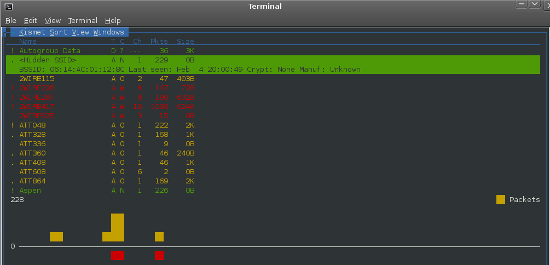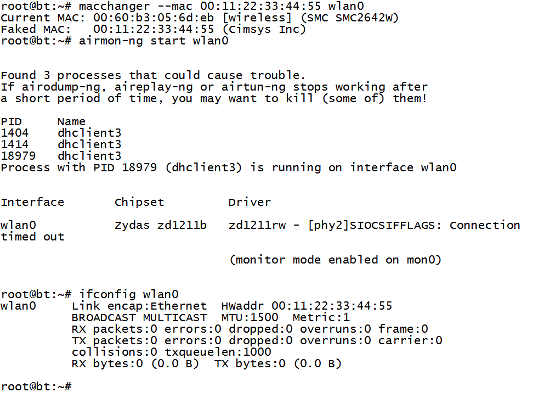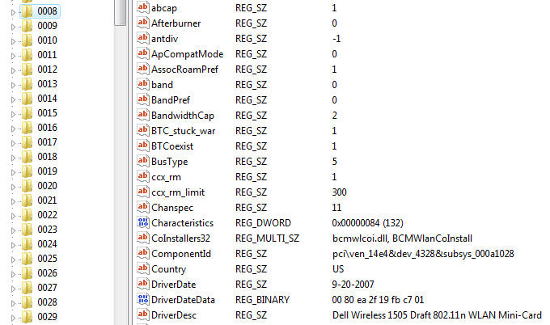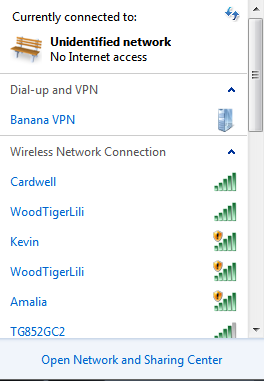(For more resources related to this topic, see here.)
Different types of attacks
We will now discuss each one of these attacks briefly. The probing and discovery attacks are accomplished by sending out probes and looking for the wireless networks. We have used several tools for discovery so far, but they have all been passive in how they discover information. A passive probing tool can detect the SSID of a network even when it is cloaked, as we have shown with the Kismet tool. With active probing, we are sending out probes with the SSID in it. This type of probing will not discover a hidden or cloaked SSID. An active probing tool for this is NetStumbler (www.netstumbler.com). With an active probe, the tool will actively send out probes and elicit responses from the access points to gather information. It is very difficult to prevent an attacker from gathering information about our wireless access points; this is because an access point has to be available for connection. We can cloak or hide the SSID.
The next step an attacker will carry out is performing the surveillance of the network. This is the technique we used with Kismet, airodump-ng, and ssidsniff. An example of the output of the Kismet tool is shown in the next screenshot:

All three of these tools are passive, so they do not probe the network for information. They just capture it from the wireless frequency that is received from the network. Each of these tools can discover the hidden SSID of a network, and again, are passive tools.
Once the attacker has discovered the target network, they will move to the surveillance step and attempt to gather more information about the target. For this, we can again use any of the three tools we previously mentioned. The information that an attacker is looking for are as follows:
-
Whether or not the network is protected
-
The encryption level used
-
The signal strength and the GPS coordinates
When an attacker is scanning a network, he or she is looking for an "easy" target. This is the motive of most of the attackers; they want an easy way in, and almost always, they target the weakest link.
The next step that an attacker will typically pursue is Denial of Service (DoS); unfortunately, this is one area we really cannot do much about. This is because, in the case of a wireless signal, the network can be jammed by using simple and inexpensive tools; so if an attacker wants to perform a DoS attack, there is really not much that we can do to prevent it. So we will not spend any more time on this attack.
Unlock access to the largest independent learning library in Tech for FREE!
Get unlimited access to 7500+ expert-authored eBooks and video courses covering every tech area you can think of.
Renews at $19.99/month. Cancel anytime
The next attack method is one that is shared between the "wired" network world and the wireless world. The attack of masquerading, or spoofing as it is sometimes referred to, involves impersonating an authorized client on a network. One of the protection mechanisms we have within our wireless networks is the capability to restrict or filter a client based on their Media Access Control (MAC) address. This address is that of the network card itself; it is how data is delivered on our networks. There are a number of ways to change the MAC address; we have tools, and we can also change it from the command line in Linux. The simplest way to change our MAC address is to use the macchanger tool. An example of how to use this tool to change an address is shown in the next screenshot:

In the Windows world, we can do it in another way; but it involves editing the registry, which might be too difficult for some of you. The hardware address is in the registry; you can find it by searching for the term wireless within the registry. An example of this registry entry is shown in the following screenshot:

The last category of attacks that we will cover here is the rogue access point. This is an attack that takes advantage of the fact that all wireless networks have a particular level of power that they transmit. What we do for this attack is create an access point with more power than the access point we are masquerading as; this results in a stronger signal being received by the client software. When would anyone take a three-bar signal over a five-bar signal? The answer for that would be: never; that is why the attack is so powerful. An attacker can create an access point as a rogue access point; there is no way for most clients to tell whether the access point is real or not. There really is nothing that you can do to stop this attack effectively. This is why it is a common attack used in areas that have a public hotspot. We do have a recommended mechanism you can use to help mitigate the impact of this type of attack. If you look at the example that is shown in the next screenshot, can you identify which one of the access points with the same name is the correct one?

This is an example of what most clients see when they are using Windows. From this list, there is no way of knowing which one of the access points is the real one.
Summary
Thus in this article we covered, albeit briefly, the steps that an attacker typically uses when preparing for an attack.
Resources for Article :
Further resources on this subject:
 United States
United States
 Great Britain
Great Britain
 India
India
 Germany
Germany
 France
France
 Canada
Canada
 Russia
Russia
 Spain
Spain
 Brazil
Brazil
 Australia
Australia
 Singapore
Singapore
 Canary Islands
Canary Islands
 Hungary
Hungary
 Ukraine
Ukraine
 Luxembourg
Luxembourg
 Estonia
Estonia
 Lithuania
Lithuania
 South Korea
South Korea
 Turkey
Turkey
 Switzerland
Switzerland
 Colombia
Colombia
 Taiwan
Taiwan
 Chile
Chile
 Norway
Norway
 Ecuador
Ecuador
 Indonesia
Indonesia
 New Zealand
New Zealand
 Cyprus
Cyprus
 Denmark
Denmark
 Finland
Finland
 Poland
Poland
 Malta
Malta
 Czechia
Czechia
 Austria
Austria
 Sweden
Sweden
 Italy
Italy
 Egypt
Egypt
 Belgium
Belgium
 Portugal
Portugal
 Slovenia
Slovenia
 Ireland
Ireland
 Romania
Romania
 Greece
Greece
 Argentina
Argentina
 Netherlands
Netherlands
 Bulgaria
Bulgaria
 Latvia
Latvia
 South Africa
South Africa
 Malaysia
Malaysia
 Japan
Japan
 Slovakia
Slovakia
 Philippines
Philippines
 Mexico
Mexico
 Thailand
Thailand


















